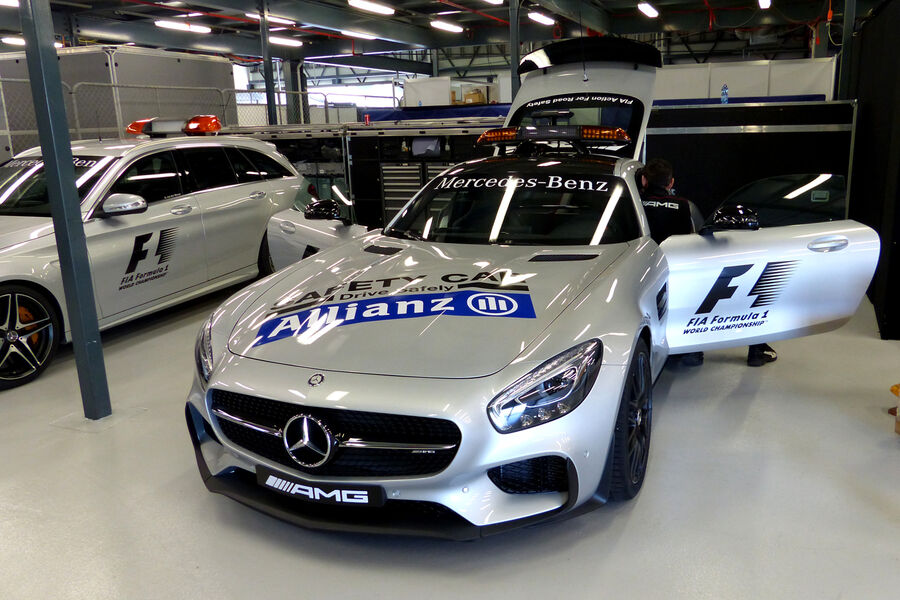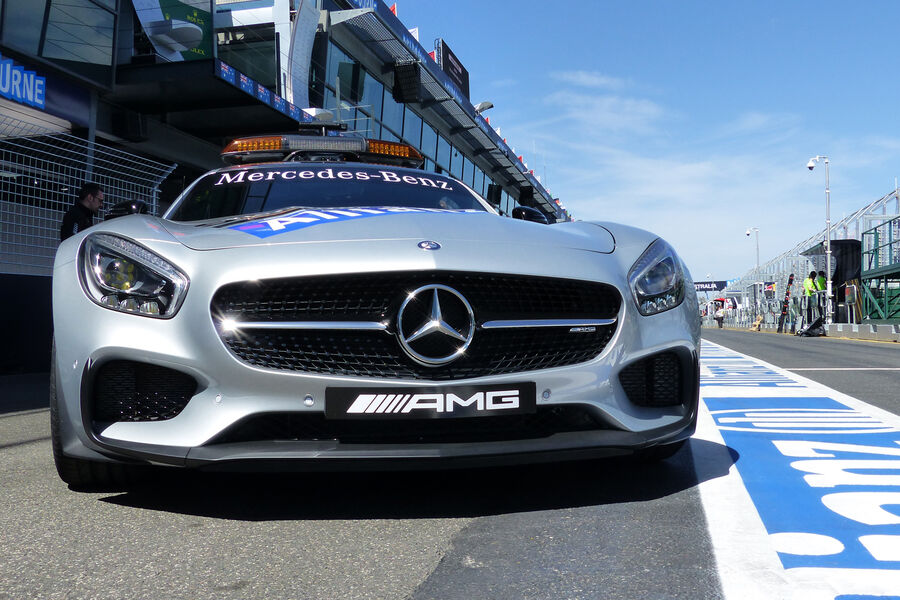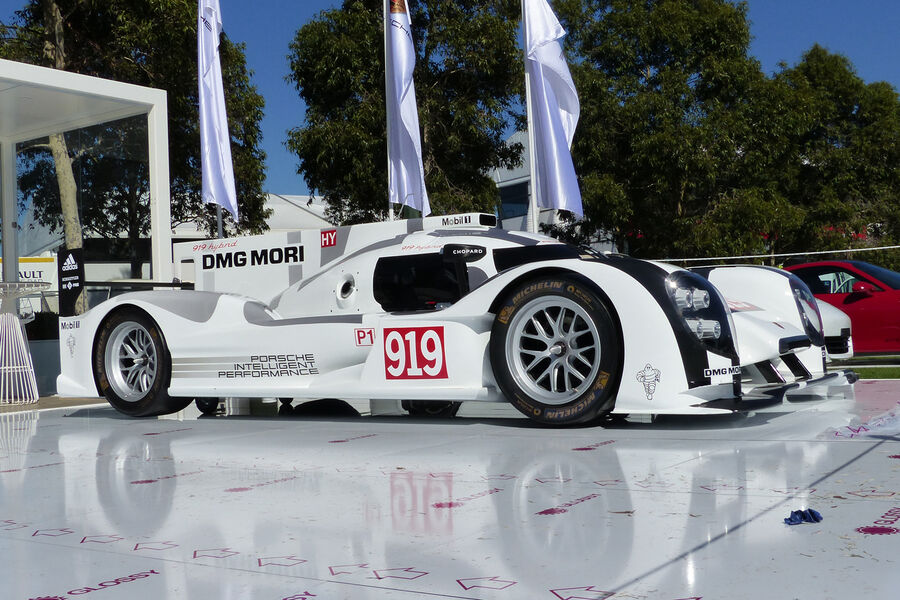F1 - Renault F1 reveals the progress made in its V6 and presents Australia
I'm back for a new season
March 11, 2015 - 3:04 p.m., by Olivier Ferret
In Melbourne, the qualifying session and the race takes place in the late afternoon. The track temperature down so in the last laps of the Grand Prix, a factor that can help manage the cooling on Power Unit. However, the sun can affect the vision of drivers.
This season, each of which has only four thrusters Groups against five last year. Power Unit with less and one more race to the calendar, the parts must now cover 1,000 additional km compared to 2014, an increase of 33%! This is more than twice the distance of a round trip between Paris and London.
During the offseason, the speed of development has enabled the Power Unit to earn 5% in performance over the entire speed range "engine" compared to the last race of 2014. This means that the propellant may provide more power while consuming the same amount of fuel. Compared to the beginning of last season, we are also able to harvest more than 25% more power via the MSU-H. These figures allow the Renault F1 Energy to be one of the best engines in the world in terms of energy efficiency.
Another change occurred in 2015, the use of an additional propellant does not require the driver to start from the pit lane. It will now go back 10 places on the starting grid once it has recourse to a fifth copy of one of the main elements of the Power Unit. If the sanction can be seen in its entirety at the event in question, it will be converted into time penalty at the end of the race and not postponed to the next Grand Prix.
Besides trying to sign the lap record during the F1 Grand Prix Sunday, Kvyat, Infiniti Red Bull Racing driver, try to set the best time in a series of car on the Melbourne Grand Prix Circuit . The young Russian will address Thursday at the Australian track aboard a Megane RS 275 Trophy-R.
In 2015, Formula One will occur in Australia for the 30th time in its history. There Renault currently holds the record for wins with eight engine successfully unhooked the antipodes.
DETAILS ON THE POWER UNIT
ICE
The route of Albert Park is one of the most demanding for the internal combustion engine due to sudden regime mounted between turns.
Each round consists of 10 phases of acceleration where the cars go from 150 to nearly 300 km / h in less than three seconds. In parallel, the ICE sees its speed increase from 9 000 to 13 000 r / min over the same periods.
The proportion of full load "engine" reached 55% in Melbourne. In other words, teams will play at the limit of the gas flow introduced by the FIA for 55% of the time on a lathe. In race trim, teams recover as much energy via the MGU-K in those areas where power is maximum.
The engine is subjected to high stresses during braking phases supported. The most significant force occurs at turn 13, or the location of the circuit where the car decelerates the more violently. The car goes into effect from 300 to 125 km / h in the space of just 2.5 seconds. This sudden slowdown generates peak forces 4 g, levels equivalent to those experienced by fighter pilots.
Fuel consumption on a tower is the second highest in the schedule due to the choppy nature of the circuit. The route is only used once a year, the track conditions change as and when the gum is deposited throughout the weekend. These grip changes alter the way drivers seeking the accelerator pedal, a figure that may also have a significant effect on fuel consumption.
TURBOCHARGER
Most corners are trading in first, second, or third, and immediately followed by an acceleration phase. It is therefore crucial that the block responds instantly while providing good traction. The turbo, for its part, must be properly calibrated (or "soft"). The purpose? Avoid latency between when the driver presses the accelerator and when the motor actually turns into action.
Drivers use vibrators galore for the lowest possible lap times. However, this can spin the tires because the wheels are no longer in contact with the ground. Excellent flexibility ("driveability" in English) as the turbo ICE therefore appears essential to reduce this phenomenon.
The turbo will operate beyond the 100 000 r / min on corner exit.
MSU-K
The Albert Park offers moderately difficult challenge for the MSU-K, although the deceleration characteristics represent as much opportunity to recover the energy dissipated during braking.
On a turn, the electric generator recovers energy in the deceleration zones for about 15% of the time.
The key point for energy recovery is located between corners 3 and 4 or the braking period the largest continuous.
MSU-H
The longest straight of the circuit, where ICE operates at full capacity, still represents the best opportunity to harvest energy for the MSU-H. In Australia there is the pit straight.
Thermal energy can also be regained between turns 10 and 11, as well as during other phases of short acceleration. This energy can then be redirected to the internal combustion engine, and thus help to reduce the amount of fuel carried out.
As the turbocharger, the MSU-H must be properly calibrated to deliver the ideal power out of corners and save some precious tenths.
Find the best maps for the Power Unit Power transmission is the best possible way could also help glean several tenths of one turn.
REMI TAFFIN, DIRECTOR OF OPERATIONS
"It's driven by a positive mindset we go to Melbourne. This winter, we followed a very aggressive development with appropriate performance goals. All solutions explored so far have been tested and validated on the track. We have made major changes in the control systems and different main components including turbo and ICE. This translates into an improved reliability and a "driveability" constant progress. We can always do better in this area and enjoy a flexibility to move forward with a sensible development plan. In parallel, we maintain several "chips" to achieve even more performance during the season.
At the moment, we do not want to make predictions about our form of state with respect to competition. One thing is certain: compared to the last race of last season, we address this Grand Prix of Australia better prepared. Not talking yet victories or points; but obviously we hope to continue our momentum in the late 2014. "
CYRIL ABITEBOUL, DIRECTOR GENERAL
"This year, we can really claim to have looking forward to the Australian Grand Prix. In 2014, we address the Melbourne go in a totally different state of mind. 12 months later, we are much more serene. The changes this winter begin to take root and Viry site displays a lovely confidence. We are aware to start the season in the skin of challengers, but also know that the goals ahead of winter tests were completed. We began to make the Power Unit more reliable and that is exactly what we have done with more than 9 000 km covered. We also wanted to improve the performance and reduce the gap with Mercedes in half on the plane "engine". If it is more difficult to deliver judgment on those two points, our results on the track came validate the simulations to test benches, and confirm that we are moving in the right direction. The road ahead is still long, but the season is just as much and we still have several tricks up our sleeve to continue to grow in 2015. "







